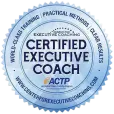
Transform Your Offer
Why Reframing Beats Rebuilding Every Time
Have you ever poured your heart into creating the perfect service offering, only to watch potential clients nod politely… and then vanish?
As someone who’s deeply invested in meaningful transformation (both for myself and my clients), I’ve discovered something profound: It’s rarely the content of your offer that falls short—it’s how you frame it.
The Critical Mistake Most Business Owners Make
When our offers underperform, our first instinct is often to add more value:
- “Maybe I should include another coaching call…”
- “What if I create a more comprehensive workbook?”
- “Perhaps one more bonus template would tip the scales…”
But here’s the truth I’ve observed across hundreds of businesses: Clients don’t buy your offer. They buy the result they believe it will give them.
They’re silently asking themselves:
- What specific problem will this solve for me?
- Why is this approach better than alternatives?
- How will my life or business transform?
- And most crucially: Why should I act now?
The Mindset Shift: From Ingredients to Outcomes
Consider the difference between these two approaches:
Traditional framing (focused on structure):
“My 12-week program includes bi-weekly coaching calls, custom assessments, and a strategic implementation plan…”
Transformation-centered framing:
“You’ll transition from feeling overwhelmed by inconsistent client flow to having absolute clarity on where your next 10 clients will come from—with a repeatable system to bring them in without constant hustle.”
The structure still matters, but it becomes supporting evidence rather than the headline attraction.
Your Offer Reframing Blueprint
As someone who values both strategic thinking and meaningful impact, I’ve developed a framework to help you reposition your offerings for maximum resonance:
1. Identify the Urgent Problem
Ask yourself: What is the felt pain your ideal client experiences?
It’s not “marketing strategy”—it’s “I don’t know where my next client is coming from.”
It’s not “operational systems”—it’s “I’m spending my weekends fixing staff mistakes.”
The key: Describe it in their language, not your expert terminology.
2. Clarify the Desired Outcome
What does success truly look like for your client?
Not: “More efficient workflows” But: “Finally taking a two-week vacation without my business falling apart”
Make it concrete. Make it vivid. Connect it to their deeper aspirations.
3. Make the Path Credible but Simple
People need to understand how you’ll get them from problem to solution, but don’t overload them with complexity. Map your method in plain terms:
- Step 1: Diagnose where the leaks are
- Step 2: Create a repeatable way to fill your calendar
- Step 3: Optimize and automate what works
Your clients want to believe they can achieve transformation—with you as their trusted guide.
4. Price for the Transformation, Not the Time
When your framing is solid, your pricing can shift from “hourly rate” to “business investment.”
You’re not charging for Zoom time. You’re charging for a result they deeply value.
Real-World Success: The Bookkeeper Who Doubled Her Rates
This isn’t just theory. I recently worked with Tasha, a virtual bookkeeper for creative businesses. Her original pitch? “Monthly reconciliations, P&L reports, and receipt tracking.”
Prospects would nod politely… and then vanish.
We reframed her offer to:
“We help six-figure creatives finally feel at peace about money—and make smarter decisions about how they grow.”
The results were transformative:
- Her monthly retainer increased from $500 to $1,000
- Close rate jumped from 30% to 70%
- Client retention improved dramatically
The service itself didn’t change—the story did. She now opens sales conversations by asking, “What’s the one thing about your finances that keeps you up at night?” Then she demonstrates how her service eliminates that specific anxiety.
A Challenge For You
As someone who values continuous improvement and meaningful connection, I invite you to try this exercise:
- Look at your current offer description
- Rewrite it to be 90% about the outcome and only 10% about the process
- Test it on your next prospect call
Ask yourself: “Am I describing my offer the way I see it—or the way my ideal client needs to hear it?”
Beyond The Reframe: Resources To Go Deeper
For those who share my love of continuous learning, here are some resources that have shaped my thinking:
Books:
- Pitch Anything by Oren Klaff – on framing and value perception
- Building a StoryBrand 2.0 by Donald Miller – on transformation-centered messaging
- Flip the Script by Oren Klaff – on creating authentic desire through reframing
Practical Tools:
- Run your offer copy through the “Before/After/Bridge” framework
- Use voice-of-customer tools to capture authentic client language
- Test two versions of your sales page: one structure-heavy, one outcome-heavy
Final Reflection: Reframe First, Rebuild Second
Your offer is likely more than good enough. It just might not sound like the answer your ideal clients are seeking—yet.
Instead of asking, “What else should I add to my offer?”, try:
“How can I make this feel like the no-brainer solution to the problem they feel most urgently today?”
That’s how good offers become great—and how purposeful businesses create lasting impact.
What’s one offer you could reframe today? I’d love to hear your thoughts in the comments below.




